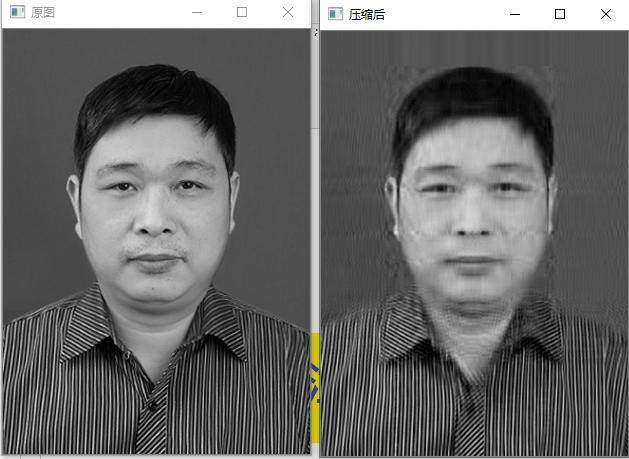资料:https://blog.csdn.net/u012198575/article/details/99548136
实例一:压缩图像
#include<opencv2/opencv.hpp> #include<iostream> int main(int argc, char** argv) { cv::Mat src = cv::imread("D:/bb/tu/lm.jpg", 0); //src是m行n列 cv::Mat result; cv::Mat tempt; cv::Mat U, S, V; src.convertTo(tempt, CV_32FC1); cv::SVD::compute(tempt, S, U, V);//SVD分解 // S是n行1列(CV_32F),U是m行n列(CV_32F),V是n行n列(CV_32F) cv::Mat s = cv::Mat::zeros(cv::Size(S.rows, S.rows), CV_32FC1); double theratio = 0.1;//压缩比例--数值越小,压缩越厉害 int len = theratio * S.rows; for (int i = 0; i < len; ++i) s.ptr<float>(i)[i] = S.ptr<float>(i)[0]; result = U * s * V; //压缩后还原 cv::Mat outputImg; //压缩后的图像 result.convertTo(outputImg, CV_8UC1); cv::imshow("原图", src); cv::imshow("压缩后", outputImg); cv::waitKey(0); return 0; }


